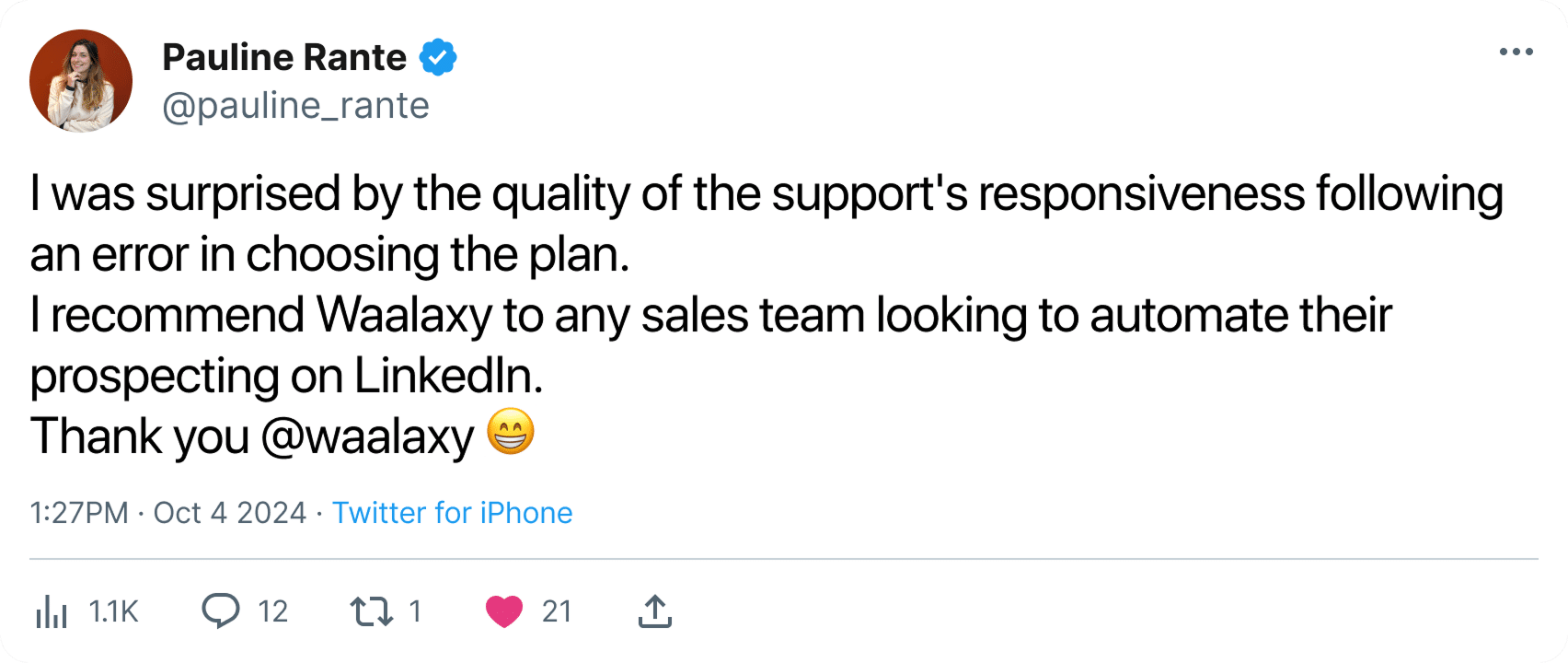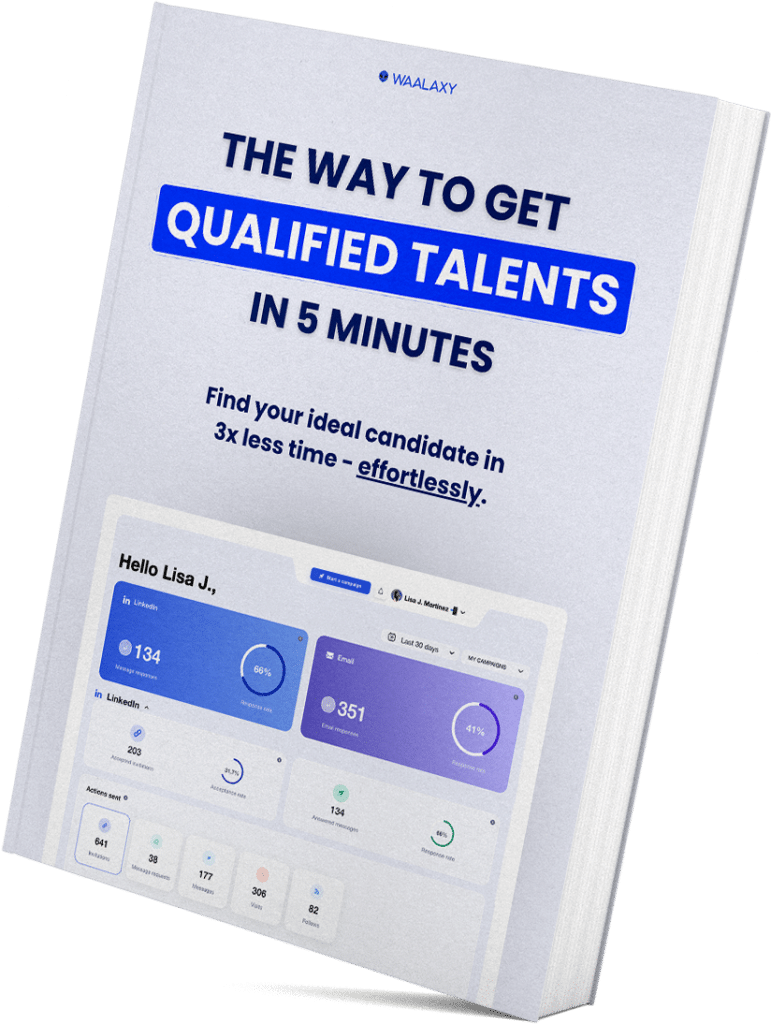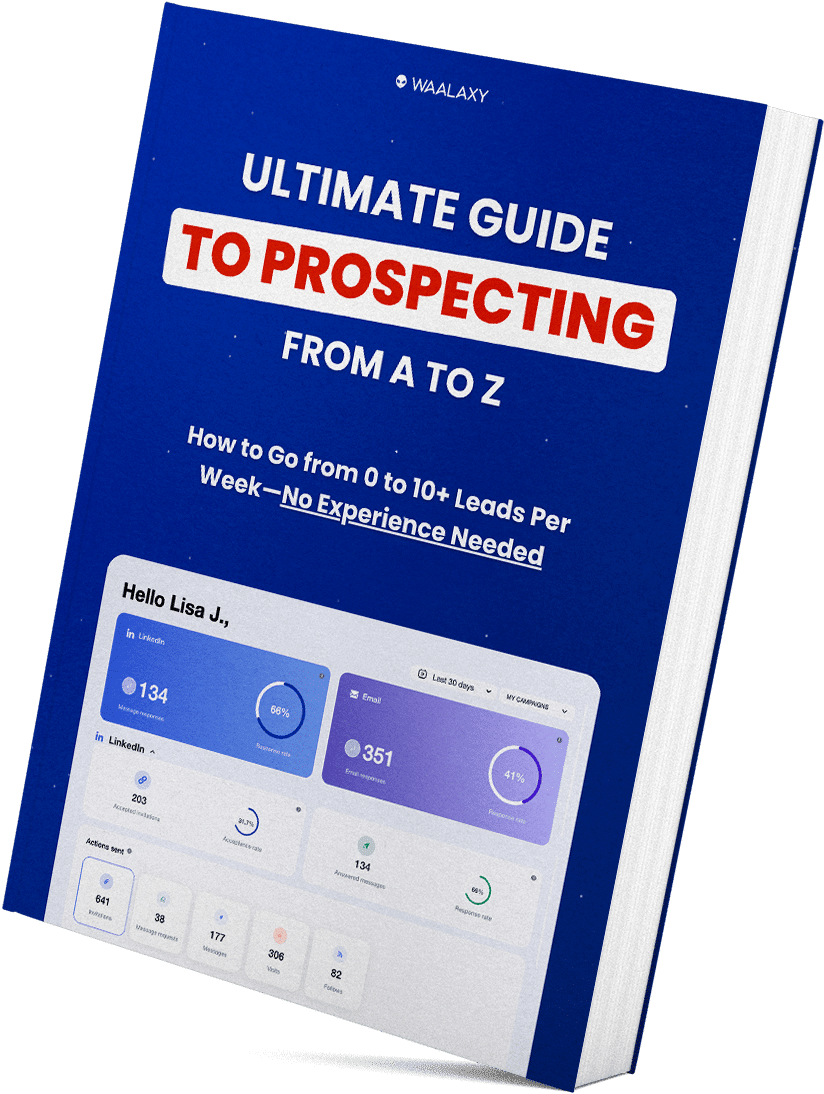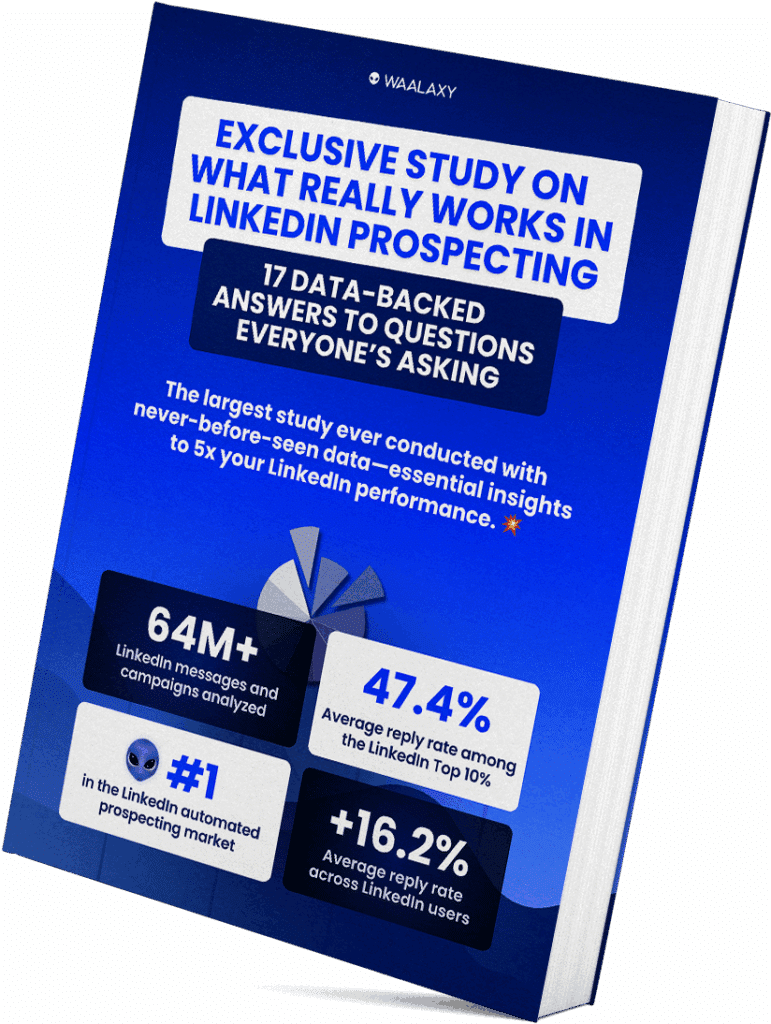Indeed vs LinkedIn, do these two names ring a bell? 👀
If you’ve posted even one job in the last few years, I’d imagine so 😌
Between the Indeed application machine and the giant professional network LinkedIn, which one is really made for recruiting? 🤔
Here, we get straight to the point. We break down what both platforms have to offer:
- We compare the tools.
- We list the real advantages and limitations of each.
- We give you concrete advice on how to recruit more effectively.
Ready for Indeed vs LinkedIn? 🥊 (Reading time: about 3 minutes).
Indeed vs LinkedIn: an overview of the platforms
When it comes to digital recruitment, two names stand out: LinkedIn and Indeed.
Even if on paper they share the same objective (to help you find the right talent), in practice, their approaches have nothing in common. 👀
Quickly, here’s an overview of the article. ⤵️
| Criteria | Indeed | Comments | |
|---|---|---|---|
| Employer branding. | ⭐⭐⭐☆☆ (3/5). | ⭐⭐⭐⭐⭐ (5/5). | LinkedIn strongly enhances your employer brand via your company page, content, and interaction with your network. Indeed remains more “neutral”. |
| Recruiting tools. | ⭐⭐⭐⭐☆ (4/5). | ⭐⭐⭐⭐⭐ (5/5). | Indeed offers effective tools for publishing and filtering. LinkedIn goes further with advanced sourcing, InMails and performance analysis. |
| Customer service. | ⭐⭐⭐☆☆ (3/5). | ⭐⭐⭐⭐☆ (4/5). | Indeed support is sometimes considered generic. LinkedIn offers more personalized support and benefits from a large community of recruiters. |
| Volume of job offers. | ⭐⭐⭐⭐⭐ (5/5). | ⭐⭐⭐☆☆ (3/5). | Indeed dominates in terms of the volume of ads posted and viewed, but your offer is more overlooked with the volume of offers. |
| Ease of use. | ⭐⭐⭐⭐☆ (4/5). | ⭐⭐⭐☆☆ (3/5). | Indeed is easy to learn, even for beginners. LinkedIn requires more time to be 100% exploited. |
| Candidate quality. | ⭐⭐⭐☆☆ (3/5). | ⭐⭐⭐⭐⭐ (5/5). | LinkedIn attracts more qualified profiles, often in post. Indeed reaches a wider audience, but sometimes requires sorting. |
| Customer reviews. | ⭐⭐⭐⭐☆ (4/5). | ⭐⭐⭐⭐☆ (4/5). | Both platforms are well rated, with preferences according to recruitment objectives (volume vs. accuracy). |
| Integrations. | ⭐⭐⭐☆☆ (3/5). | ⭐⭐⭐⭐☆ (4/5). | LinkedIn integrates easily with ATS, CRM and other HR tools. Indeed does too, but with fewer native compatibilities. |
| Rates. | 💰💰 (accessible and scalable). | 💰💰💰 (higher). | Indeed is more affordable, with free options. LinkedIn offers more features… but at a premium price. |
Let’s take a quick tour to lay the foundations. ⚙️
Indeed
Created in 2004, Indeed has established itself as the number 1 leader for millions of actively seeking jobseekers. And that’s precisely its strength: candidates are actively looking for a job.

These are profiles that are ready to apply, and often immediately available.
As a result, you’ll be able to :
- 🔵 Publish offers for free, or boost their visibility via sponsorship options.
- 🔵 Access a massive CV database.
- 🔵 Use precise filters (sector, experience, location, keywords etc), to sort quickly.
- 🔵 Track and manage applications from an intuitive dashboard.
If you need to recruit quickly for operational positions, or if you’re running a recruitment campaign for several positions, Indeed is highly effective.
Where there’s volume, there’s also sorting, because the quality of applications is often random. Sourcing is therefore passive, i.e. you wait for the profiles to come to you.
LinkedIn, on the other hand, isn’t just a job board, it’s a complete professional ecosystem.
You’ll find varied profiles, detailed career paths, publications and interactions. 👀
Some talents aren’t necessarily actively looking, but are still listening.
With, you’ll be able to :
- 🔵 Precisely target candidates via advanced searches (experience, skills, current company, school, sector, etc).
- 🔵 Get in direct contact with them via Inmails (without necessarily being in your network).
- 🔵 Showcase your employer brand via a company page.
- 🔵 Recruit without necessarily publishing an offer thanks to LinkedIn Recruiter.
As you can see, LinkedIn is the tool for hunters and recruiters of expert profiles. 💬
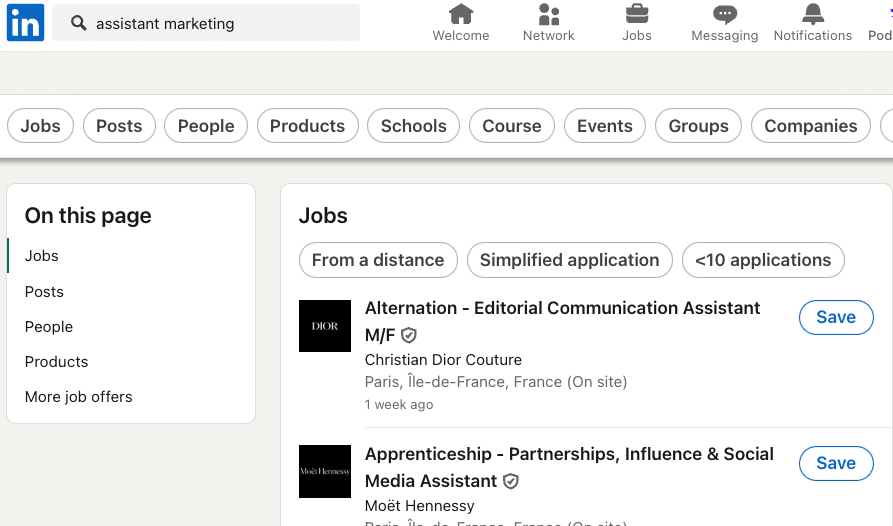
However, it’s a platform that enhances your company’s image.
Candidates look at pages, employees look at publications. You’re constantly being judged, so be careful about the content you share. 👀
Feature comparison for Indeed and LinkedIn recruiters.
When choosing a recruitment tool, it’s not just about reputation. What counts are the features that will save you time, improve the quality of applications or boost your visibility.
That’s why we’ve analyzed the three main features. 👇🏼
1) Publication of job offers
On Indeed, you can publish your job offers free of charge. Handy if you’re just starting out or testing the market.
However, without sponsorship, visibility is limited and your ads will soon be drowned out. 🙈
With a modest budget (more on this later), you can bump up your ads and receive a high volume of applications.
On the LinkedIn side, publication is generally subject to a fee.
However, your offers are proposed to profiles matching your criteria.
You can also activate visibility with “Open to Work” or your employees’ network. 🌍
2) Search for candidates
Indeed gives you access to an extensive database of CVs, sorted by :
- Keywords.
- Location.
- Experience.
It’s simple, but sometimes basic. Profiles are active in their search, which makes it easy to get in touch! 🗣️
For LinkedIn, it’s a sourcing engine. With it, you can filter :
- Sector.
- Current position.
- Hierarchical level.
- Current company.
- School.
You can even use Boolean searches to refine your searches.
3) Candidate interaction
On Indeed’s side, interaction takes place directly via the platform or by e-mail once the candidate has applied.
No Inmail, no network, no direct messaging. It’s a one-way, fairly formal channel. 💭
On the LinkedIn side, this is where things change. You can send direct messages even to candidates who don’t know you. 📱
You can also :
- View their activity.
- Comment on their posts.
- Create a relationship before even talking recruitment.
It’s much more fluid, human and strategic. 👀
LinkedIn vs Indeed: the pros and cons
Now that we’ve got the basics down, let’s review the pros and cons of each platform when it comes to recruiting.
Above and beyond functionality, what really counts is knowing what each tool can do for you (speed, quality of applications, budget, brand awareness, etc.).
Each tool has its strengths and limitations, and that’s what we’re going to look at. ⤵️
Indeed: pros and cons
| Positive points ✅ | Negative points ❌ |
|---|---|
| High volume of applications in a short space of time | Variable quality of applications |
| Publication of free offers possible | Limited visibility without sponsorship |
| Easy-to-use platform | Little interaction with candidates |
| Access to a large CV database | Passive sourcing only |
| Modular budget to suit your needs | Less suitable for qualified or penurious profiles |
LinkedIn: advantages and disadvantages
| Positive points ✅ | Negative points ❌ |
|---|---|
| Very precise targeting of profiles thanks to advanced filters | Higher costs, especially for sponsored offers and LinkedIn Recruiter |
| Possibility of sourcing passive candidates | Time required for a personalized approach |
| Enhanced employer brand thanks to company page and content | Requires a real presence and content strategy |
| Rich, detailed profiles with recommendations | Not suitable for mass or urgent recruitment |
| Direct contact tools (InMails, connections, messages) | Learning curve to use all tools effectively |
3 tips for optimizing recruitment on each platform
As you can see, each platform has its own codes. To get the most out of them, you need to know how to use them properly. 🧠
That’s why, here are 3 simple and effective tips to boost your results (you’ll thank me later 😋).
3 tips for Indeed
1️⃣ Write clear, well-structured, well-targeted offers.
A good offer is what makes the difference. Be precise about the position, the tasks, the expectations, and above all, highlight certain elements such as :
- Hours.
- Location.
- Compensation.
- Benefits.
2️⃣ Use sponsorship options strategically.
A small, well-placed budget can take you right to the top of the results. 🚀
To do this, target urgent positions or hard-to-find profiles. 👀
3️⃣ Use advanced filters to save time.
Use filters (location, level of experience, keywords) to sort and rank relevant profiles and avoid missing out on a good candidate drowning in a sea of CVs. 🌊
3 tips for LinkedIn
1️⃣ Optimize your company page.
Your LinkedIn page is your employer showcase, so take care of it:
- Add photos.
- Showcase your values.
- Relay your offers.
- Publish your internal success stories.
The more human it is, the more it inspires talent to apply.
2️⃣ Master Boolean searches for sourcing.
On LinkedIn, advanced search is powerful, provided you know how to use it. 😅
Combine operators like AND, OR and NOT to refine your queries.
Boolean search can be a real asset for you and your business. 💪🏼
3️⃣ Use an automation tool to recruit
Recruiting on LinkedIn takes time. What if you could automate it all, without losing quality? 🤔
With Waalaxy, it’s possible.
This tool lets you automate your sourcing campaigns while retaining a human approach. With just a few clicks, you’ll be able to:
- 🔵 Import targeted profiles (position, sector, location).
- 🔵 Launch invitation sequences and personalized messages.
- 🔵 Automatically relaunch candidates who have not responded.
- 🔵 Track your results via KPIs.
Waalaxy automatically adapts to LinkedIn restrictions to stay on track.
And if you’re still doubting this tool, here are some figures that will change your mind: ⬇️
- +60% of pro emails found on average.
- 15 data sources in 1.
- Export complete profiles to Hubspot, Salesforce, Pipedrive and 2000+ apps (via Zapier/Make).
- Instant access to 500M+ profiles in our database (100% GDPR & CCPA).
How about a recap?
We’ve compared, analyzed and evaluated. Now we’re simply putting things right.
👉🏼 Indeed is your best ally if you want to move fast, reach a maximum number of candidates and build volume. No need for strategy, no need for a community manager. Just post, sort and recruit.
👉🏼 LinkedIn is the tool for recruiters looking for the rare pearl. You don’t recruit, you hunt, you target, you engage. Above all, you enhance your company’s image.
Because on LinkedIn, everything shows. 👀
To sum up:
- Do you want volume? Indeed.
- Want precision? LinkedIn.
And it’s a good idea to combine the two. 🫱🏽🫲🏼
Frequently asked questions
Don’t be too hasty, we still have a few questions you might be interested in.
What’s the difference between LinkedIn and Indeed?
LinkedIn is a professional social network. You create a profile, make connections, share content and interact.
It’s a place where recruiters can go to find specific profiles, often already employed (but not necessarily actively looking), but open to new opportunities.
LinkedIn is ideal for targeted sourcing, headhunting and recruiting qualified talent.
Conversely, Indeed is a“job board“. No network, no “social”. It’s a job posting platform, designed to generate volume. 🧠
Candidates come voluntarily to apply.
The result? 🤔
You reach an active, broad audience and receive applications quickly. 📨
Why use Indeed?
Indeed is the fast track to recruitment. The platform attracts millions of active candidates every month. 🧲
It’s their first reflex when looking for a job, especially in sectors :
- Operational.
- Technical.
- Logistics.
- Sales.
As a recruiter, this means that you receive applications quickly, often within the first few hours of publication. 🕰️
Is Indeed a social network?
No, Indeed is not a social network.
It’s a job board, i.e. a platform specialized in posting job offers and putting you in direct contact with candidates. 💬
On Indeed, you don’t have an acutality feed, company publications, or relationships or connections between users.
It’s all about active search, candidates :
- Consult offers.
- Apply.
And you receive their applications.
Indeed is a distribution tool, LinkedIn is a relationship tool.
You know all about this famous Indeed vs LinkedIn duel. 🥊


